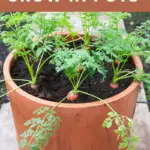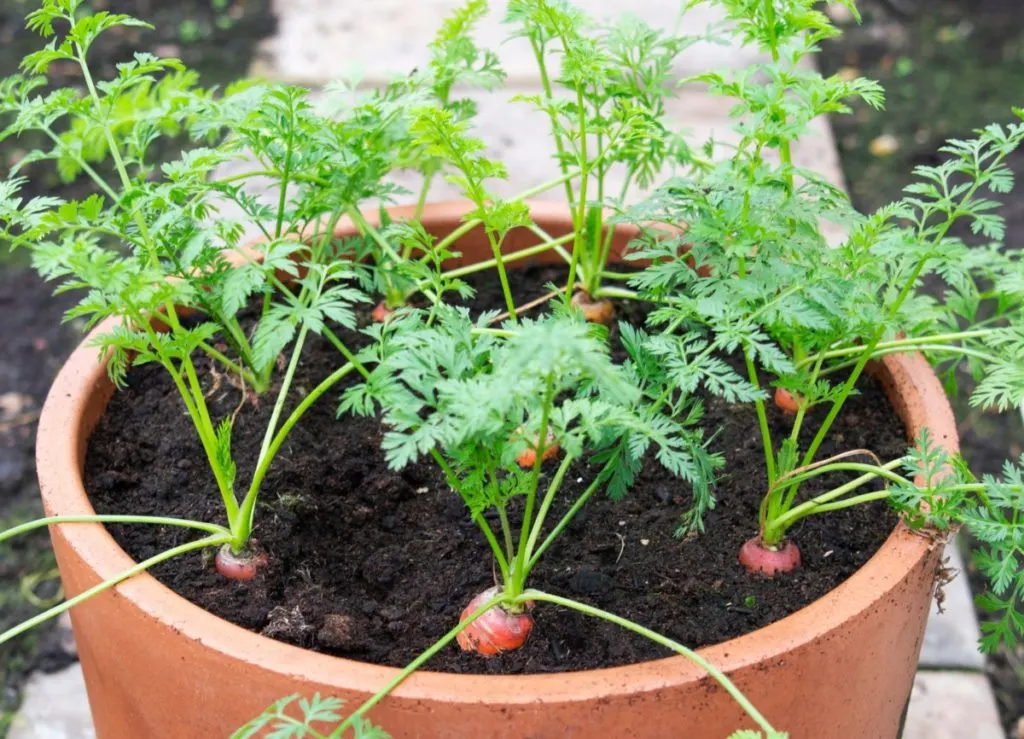
The number one reason for most people choosing container vegetable gardening is to save space.
While this is a fantastic reason to get started, it is by no means the only benefit you will receive from learning how to grow food in containers.
Growing edible crops in a container garden is suitable for those who are renting and may not have access to land for planting.
Container gardening is also a fitting way for beginners to get into gardening, before making the larger commitment to a garden plot.
It can also be a worthy way of trying out new-to-you vegetables on a smaller scale.
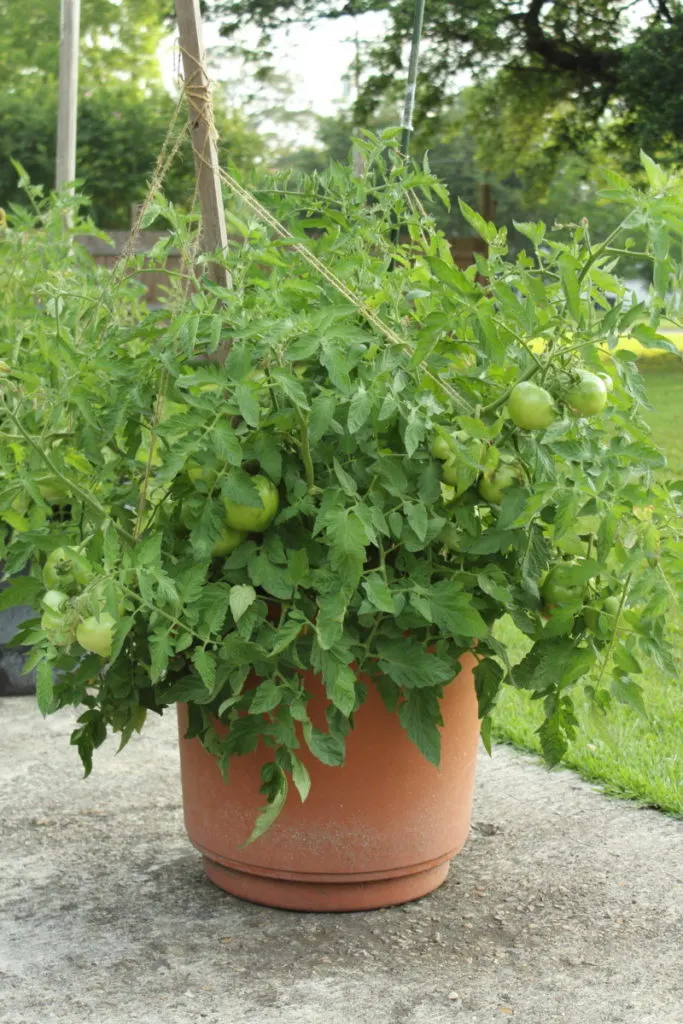
Whatever it is that attracts you to container gardening, keep reading for even more reasons to try it this year. You’ll also find out if it can work with growing your favorite plants, or not. In that case, it is back to the garden you go!
Or perhaps all you need is a hybrid solution that encompasses the best of both garden types. It all depends on just how much space you have to devote to growing.
What plants are good for growing in containers?
You will be pleased to know that a varied selection of vegetables, flowers, fruits and herbs are all waiting to be planted in containers.
In general, fast growing crops are better suited to container gardening, though there are a few exceptions. It is also important to consider the size of the plant when choosing your seeds. Corn, for example, grows far too tall and has the tendency to fall over in higher winds. That would not be good in a container, nor would vining vegetables be suitable, such as pumpkins or butternut squash.
30 Fruits, Vegetables & Herbs To Grow In Containers
The best candidates for container gardening are:
- basil
- beets
- blueberries
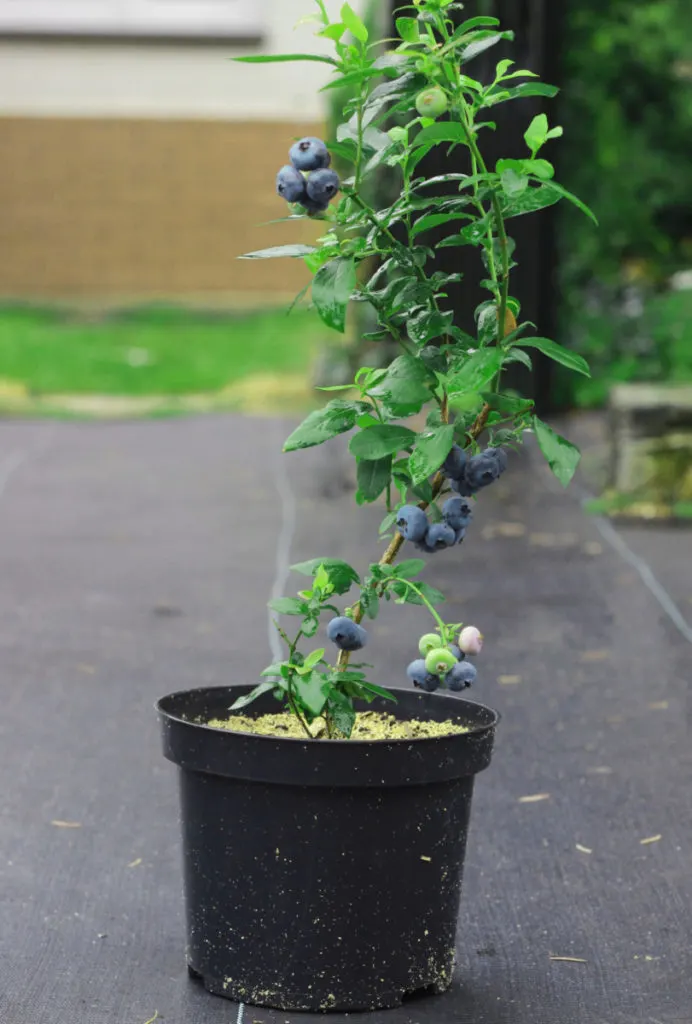
- broccoli
- bush beans
- cabbage
- calendula
- carrots
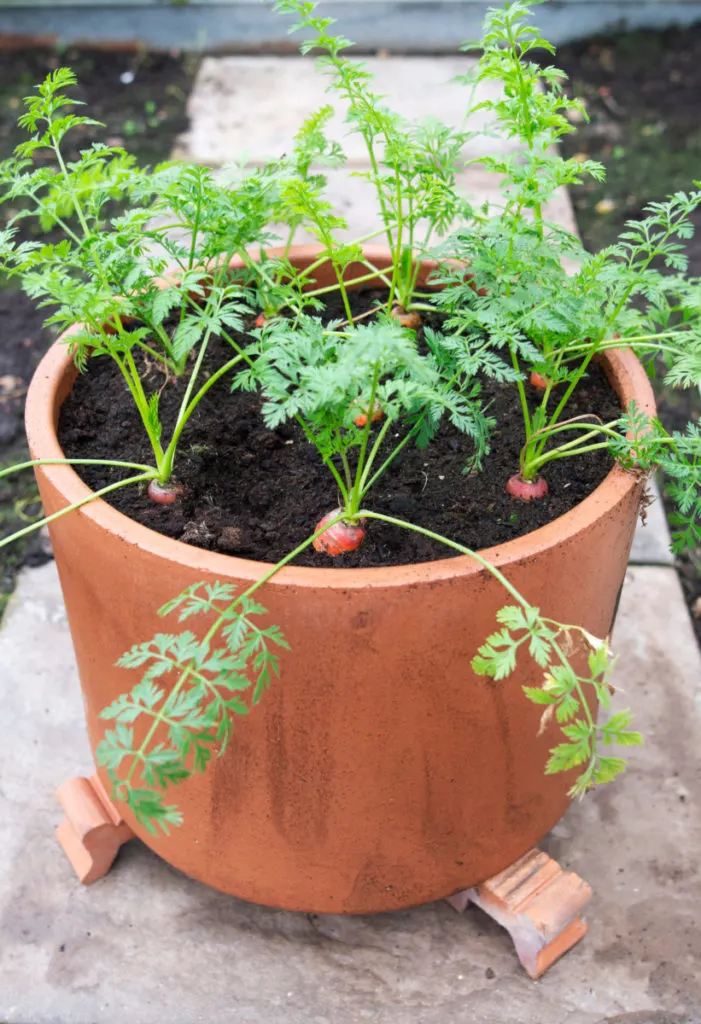
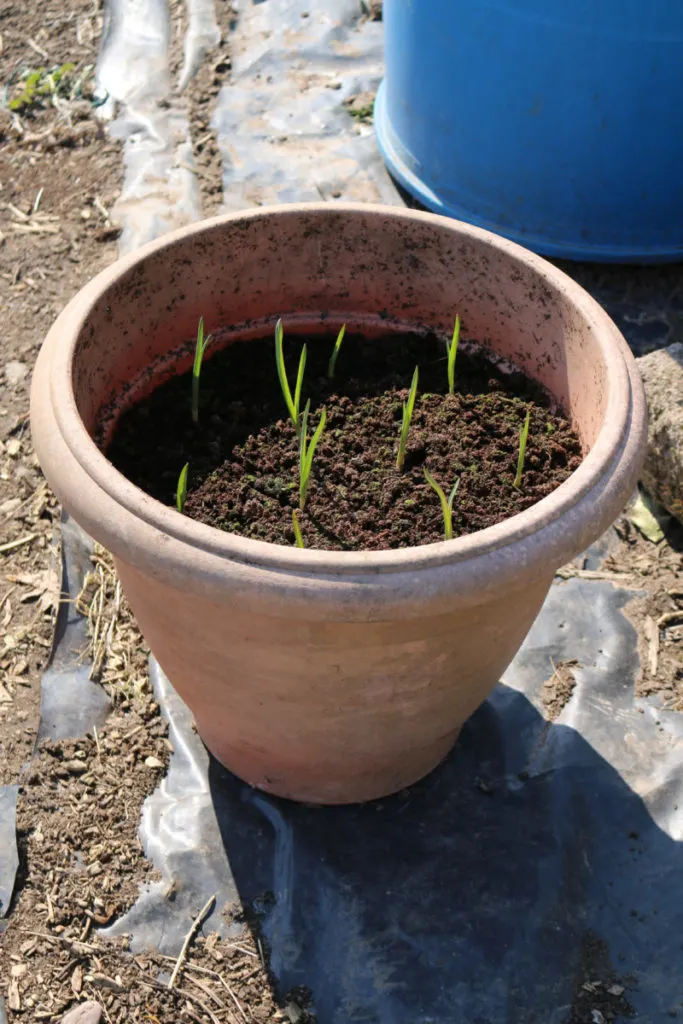
- lemon balm
- marigold
- mint
- nasturtium
- peas
- peppers
- potatoes
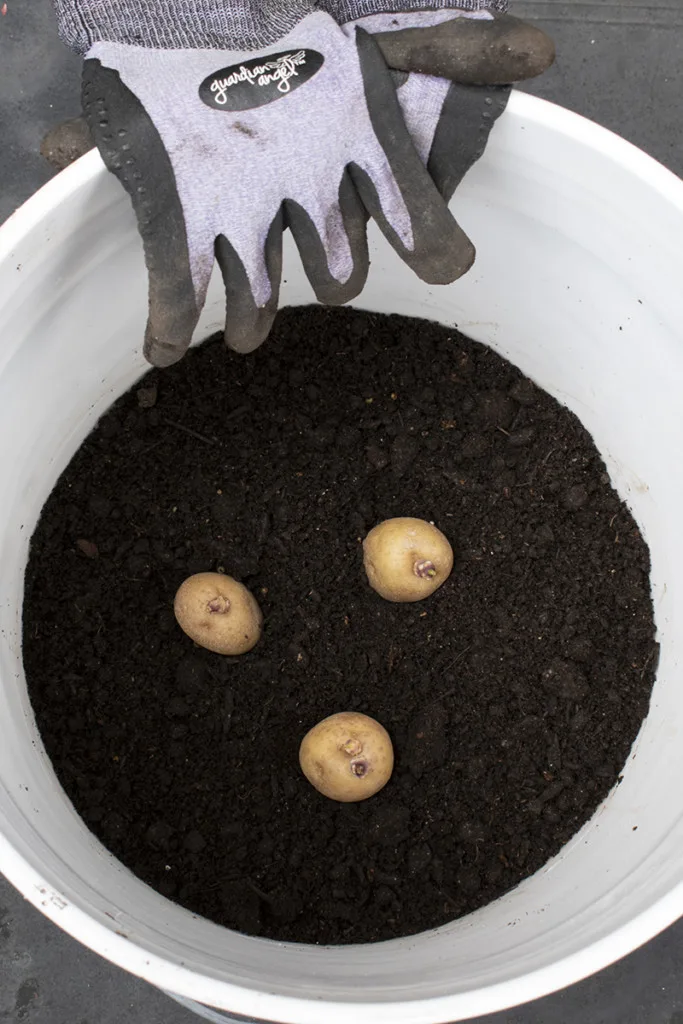
- radishes
- rosemary
- sage
- salad greens
- strawberries
- summer squash
- tomatoes
- thyme
- verbena
- zucchini
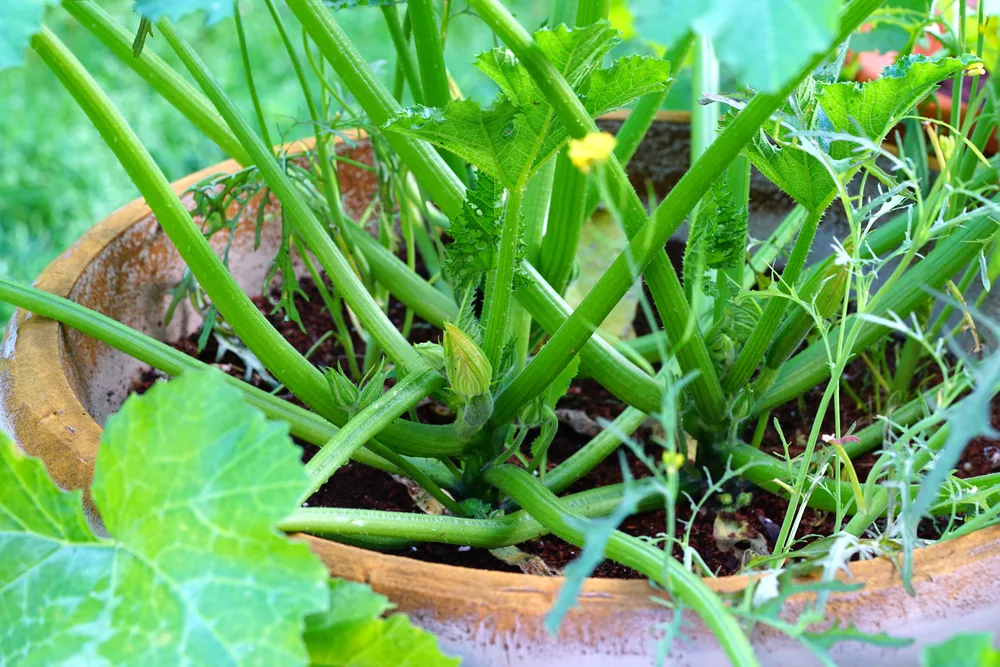
Within one pot you can have several things going on. For example, you can plant lettuce or radishes around the perimeter, with some cherry tomatoes in the center to maximize space-efficiency even further.
8 benefits of container gardening – besides saving space
Let’s get beyond space and seek out some other important benefits of container gardening, as efficiency can only take us so far.
1. Container gardens are easy to access
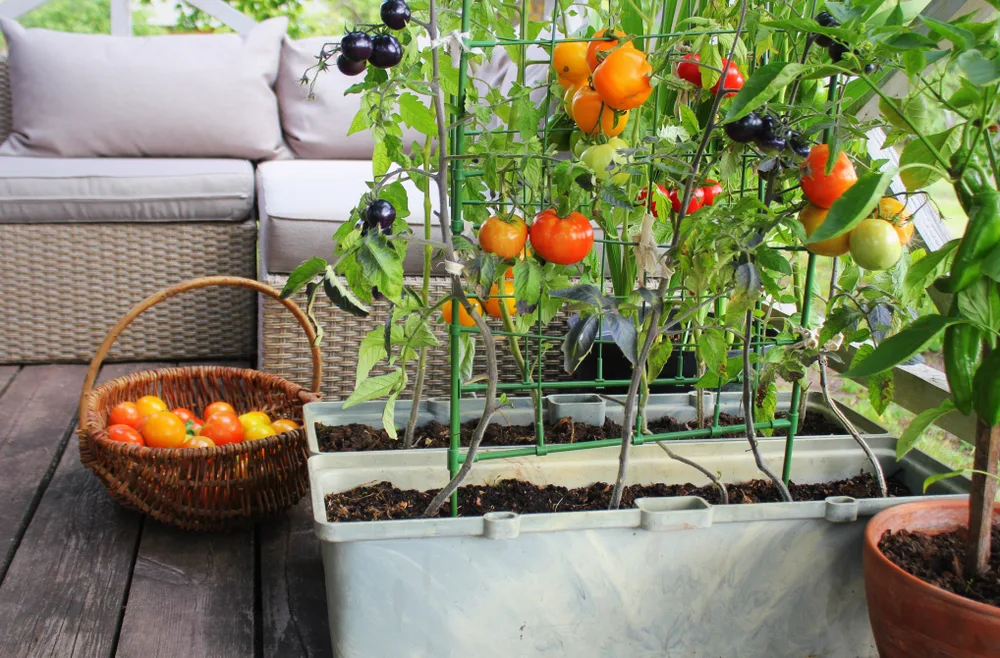
As containers are likely to be placed close to your house, even right outside on the deck or patio, planting, weeding and harvesting can all be accomplished with ease within a few steps from home.
This also means no muddy boots! Although you will be weeding by hand, so a pair of gardening gloves is highly recommended.
2. Save water and other resources
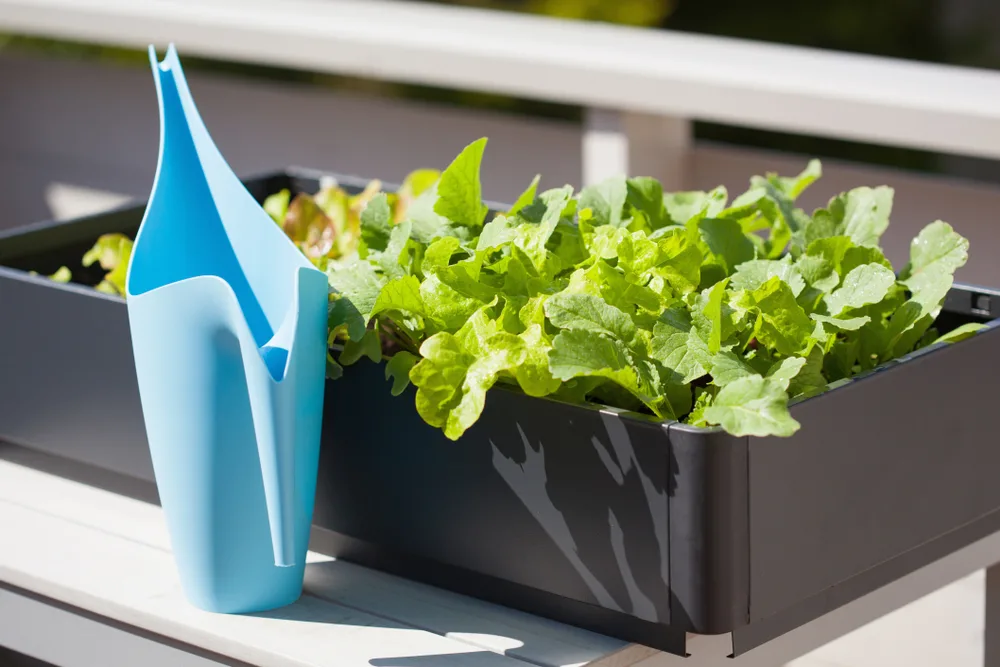
Planting in pots means that you need to water only as often, and as much, as the soil in your containers dry out. Naturally this will happen quicker on hot and windy days. It also depends on your planting containers. Metal pots heat up faster, drying the soil out at a quicker rate, as do terracotta pots. Glazed ceramic is the best for holding moisture.
In any case, irrigation will be easy with either a hose or watering can, which ultimately saves water.
Another way that container gardening saves resources, is with fertilizer, compost and other soil amendments. You only need what fits in the pot and nothing more. Though you may need to experiment to find out what your plants appreciate the most.
3. Fewer weeds than in traditional gardens
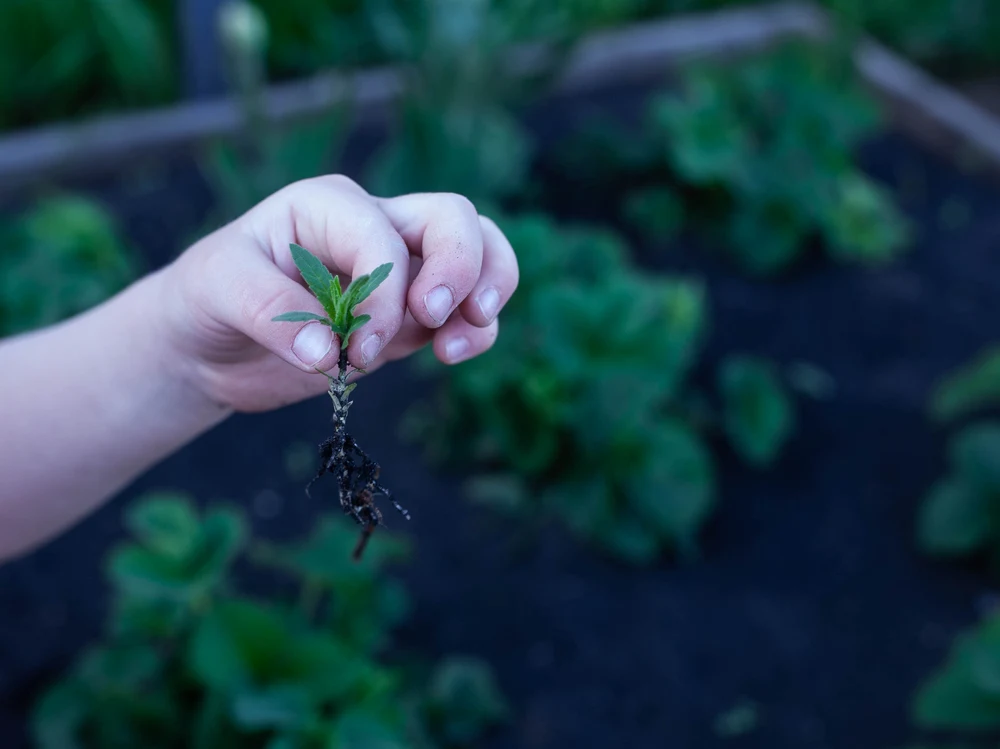
Forget about breaking your back with a hoe. All you need is your hands, a couple of small hand tools (trowel, shovel, etc.) and you are ready to go. Since there is less soil exposed to the sun, and if you are starting out with a sterile soil substrate, you will have fewer weeds to contend with from the get-go.
This allows you to focus on the growth of your plants instead of the unwanted weeds.
4. Easier to control pests
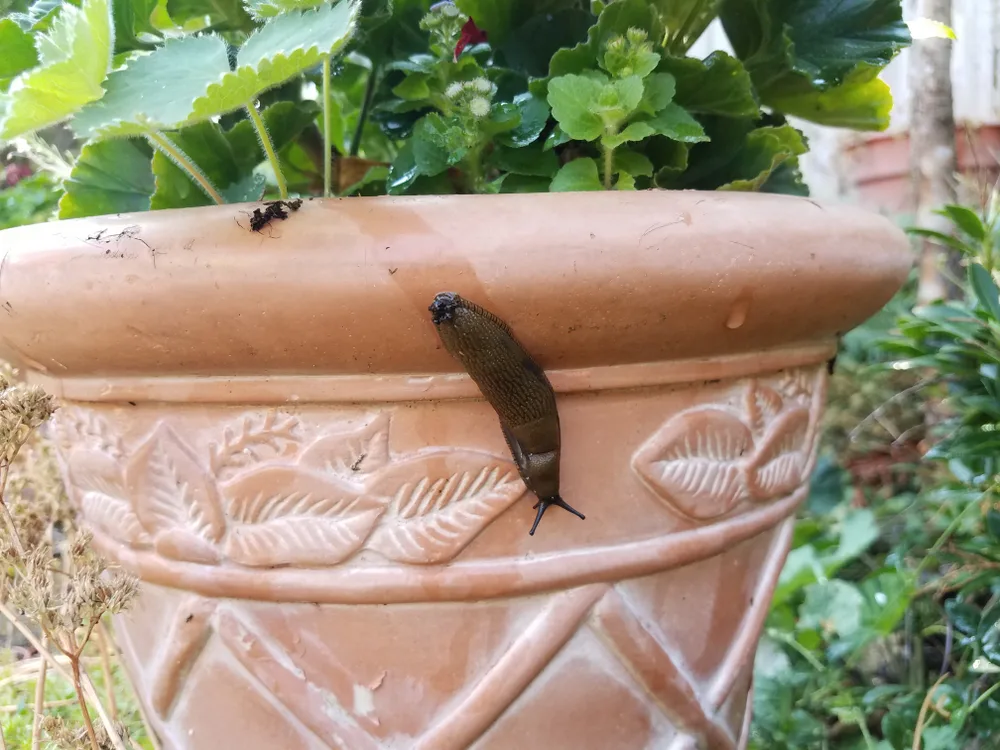
If you are gardening in containers, it may be the case that you are growing fewer kinds of crops. That in itself means a lowered chance for pests to take over.
Combine that with the fact that the pots are off the ground, and you have already eliminated a slew of grubs and insects that nest, rest and nibble below the soil.
If an unwanted visitor does show up, it is easier to manually control the pest population, than if the plant were out in the garden. It is even possible to isolate the plant by covering it entirely, or moving it to another location.
5. Container gardens are portable
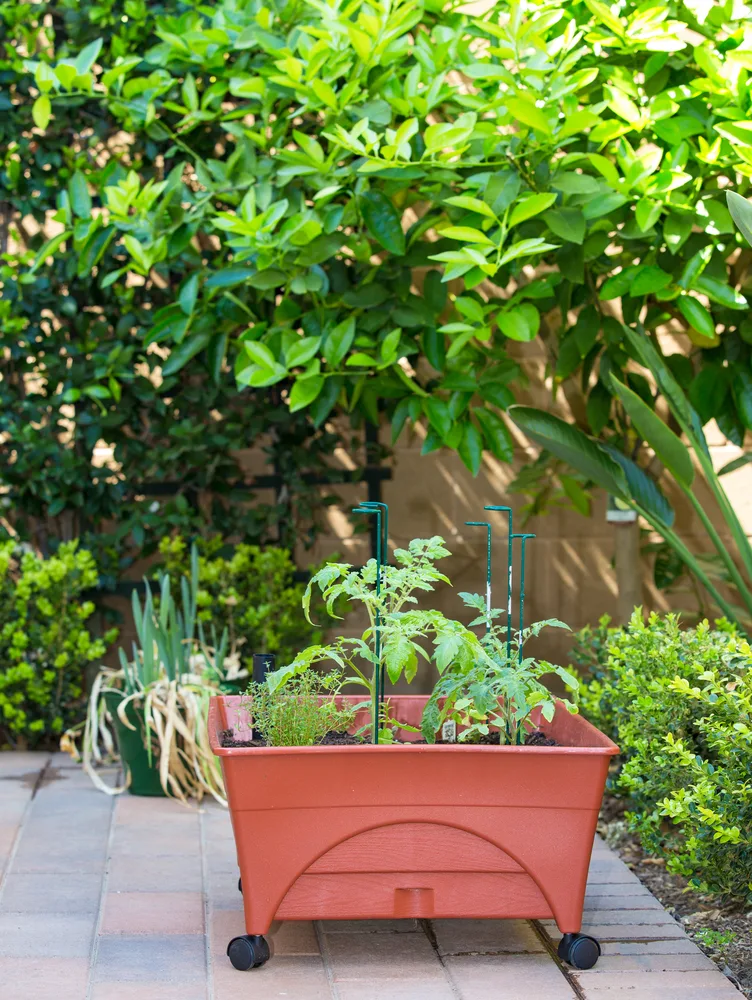
Do your container plants need sun or shade? Or a delicate mixture of both?
Are you expecting an unprecedented rainfall (or hail!) that could damage your container garden crop?
The good news is that you can potentially move your pots out of harm’s way if necessary, when the moment calls for it. Notice, I said “potentially”. If they are too heavy, this will be a difficult task. However, with a little forward thinking, the largest pots could be on wheels or in carts that are simple to move. A plant caddy is the perfect solution for pots that are easy to move in and out of the sun.
6. Instant upgrade to your yard or gardenscape
If your container garden is right outside your back door, you may enjoy the flexibility of moving pots around to redecorate as the season progresses.
Bring forward the plants that are harvestable, or in bloom. Set the others, that are past their prime, but which you still intend to save seeds from, off to the side or to the back.
The beauty of container gardening is that you can continuously add to it. If you feel the need to bring home some more herbs, don’t refrain. They will be happy among your other potted plants!
7. Less manual labor is required
For starters, there is no need for tilling with container gardening. The biggest energy output you need is for filling the pots the very first time. The rest is simple. If you can manage that, you will be able to harvest herbs all summer long. Hopefully with some tomatoes and lettuce too.
Container gardening also require fewer tools, making it a fantastic way to get started with learning to grow your own food.
8. Containers have the ability to “restrict” herbaceous invasive plants
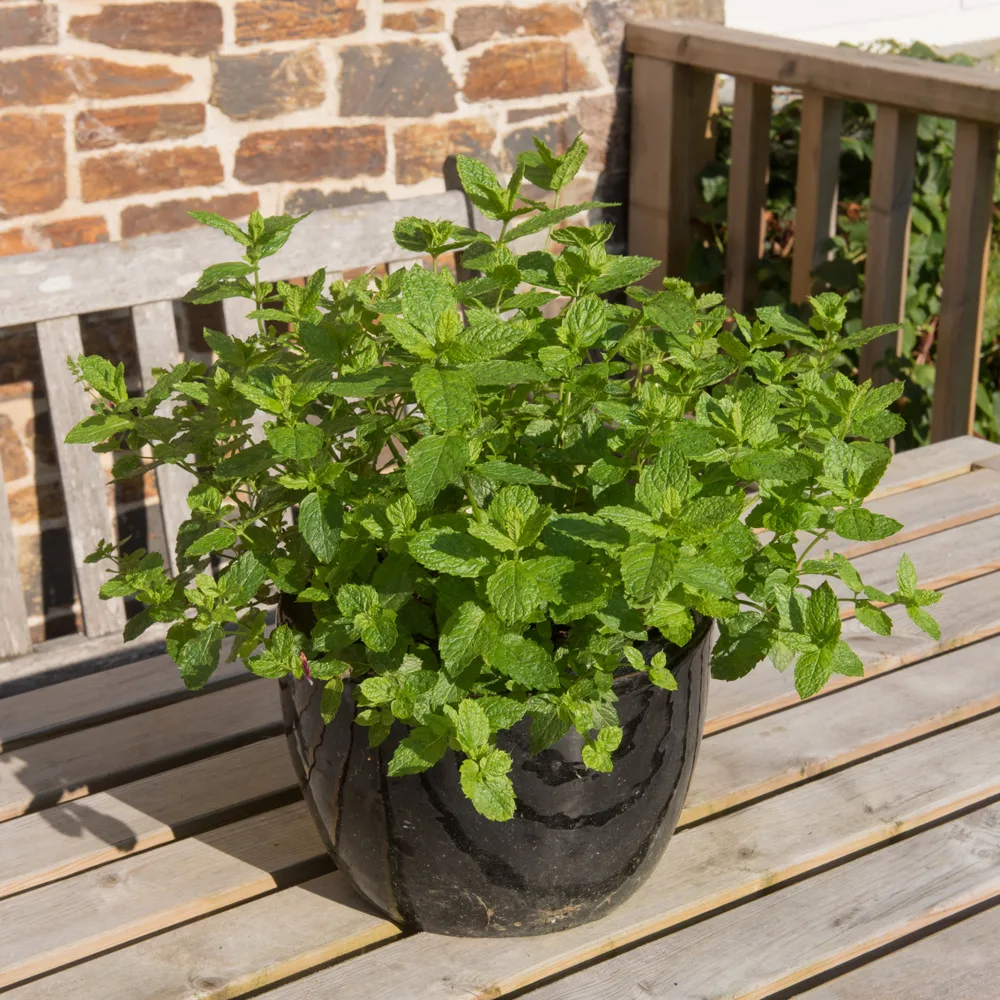
When you think of edible herbs such as mint and lemon balm, the first thing you remember about them, after their intense flavor, is the fact that they tend to spread out in the garden. So much so, that some people even fear releasing mint in their beloved garden!
That doesn’t mean you should give up on growing mint though! Just give it a container to grow in and the problem is solved. You can even end the day with a mint mojito to celebrate your success!
With the good also comes the bad – or the less good
As heavenly as container gardening may seem at first sight, there are a few drawbacks to gardening in containers that must be presented. When you are well-informed on both sides, you can then make the enlightened choice for yourself.
While there is never any doubt that container gardening is an absolutely wonderful option for small spaces that lack access directly to the soil, it may not be the best option for everyone.
Container gardening also comes with a set of drawbacks, particularly when you are just getting started.
- initial cost of large pots can be much more than you imagined! (You can mitigate these costs by starting a cheaper 5 gallon bucket garden.)
- size of pots can restrict root/plant growth
- potting soil needs to be purchased (though it can be reused)
- it needs to be well-draining
- and it may require additional fertilizer throughout the growing season
- perennial plants need to be safely overwintered
- container gardens also require frequent watering
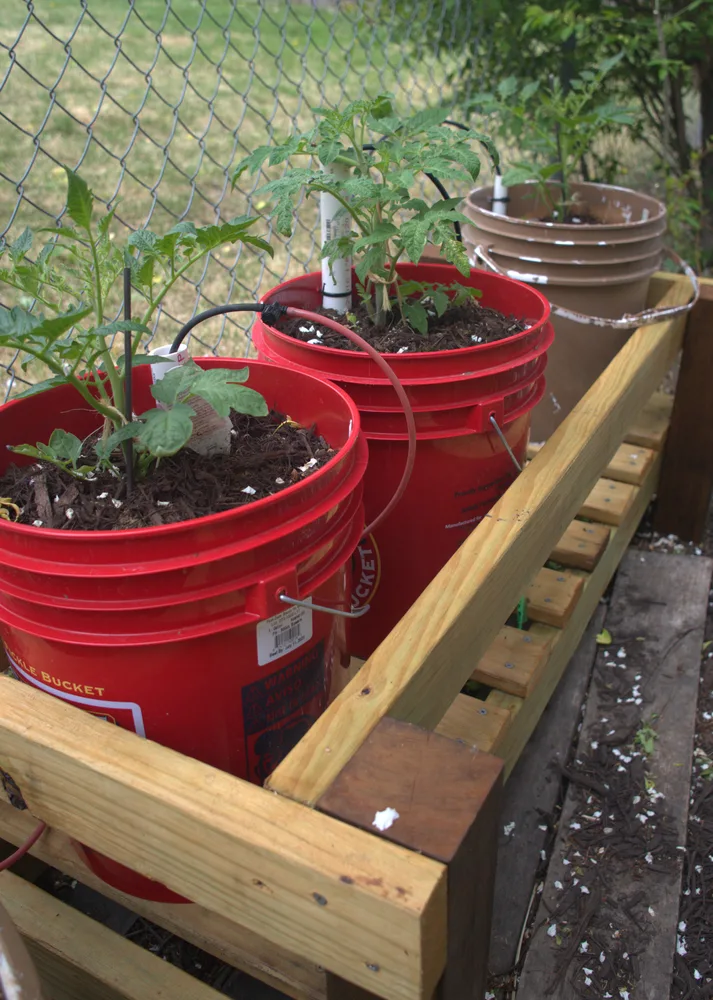
It goes without saying that you will only be rewarded with the fruits of your labor if you take care of each and every pot in which you have planted seeds or transplants.
On the upside, you only have to invest the amount of time and energy into your container garden based on the number and size of containers that are actively in use. And you get healthy veggies, herbs and greens in return.
With a small learning curve, it is easy to overcome many of the drawbacks of container gardening.
Frequently asked questions about container gardening
As you consider converting part (or all) of your vegetable growing space to container gardening, you will inevitably have more questions.
Does the size and depth of the container affect plant growth?
Yes, it does. For this reason, you need to choose appropriate size containers for each plant you intend to grow. Keep in mind that you can grow more than one plant in each pot – so, be sure to accommodate the roots of the largest one.
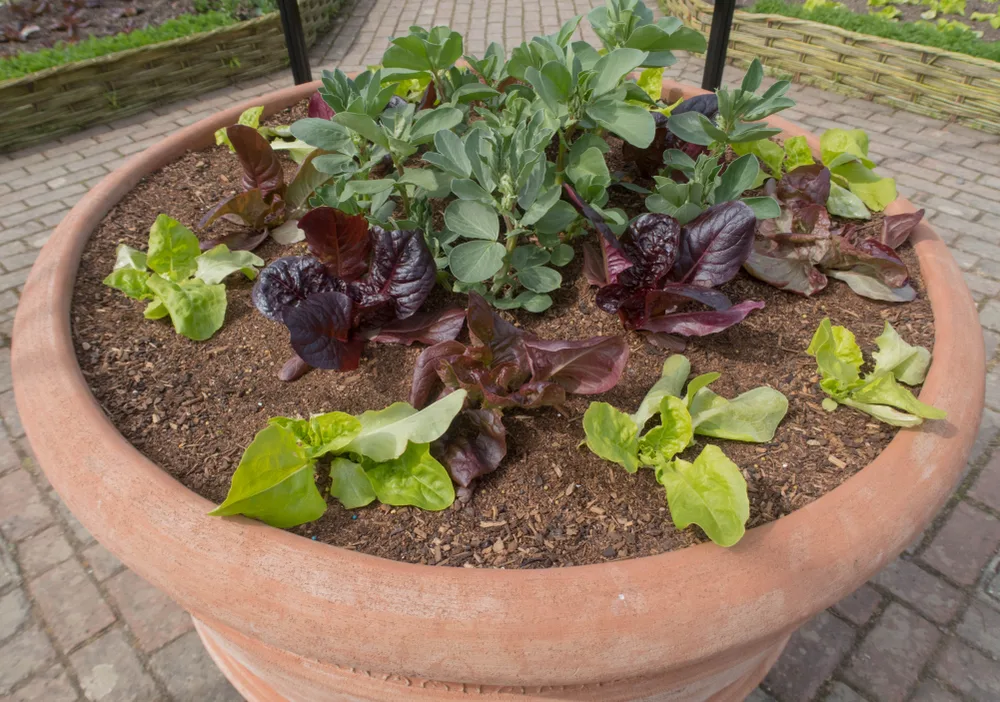
What soil is best for growing vegetables in containers?
It is easy to get confused at the garden center, as you stare at bags upon bags of soil mixes. Some are better for flowers, others favor houseplants, while there are some good quality, all-purpose ones that are ideal for containers – and the vegetables that grow in them.
Dig into this article at Get Busy Gardening to discover more about choosing the best potting soil mix for container gardening.
Is a hole on the bottom of the pot necessary?
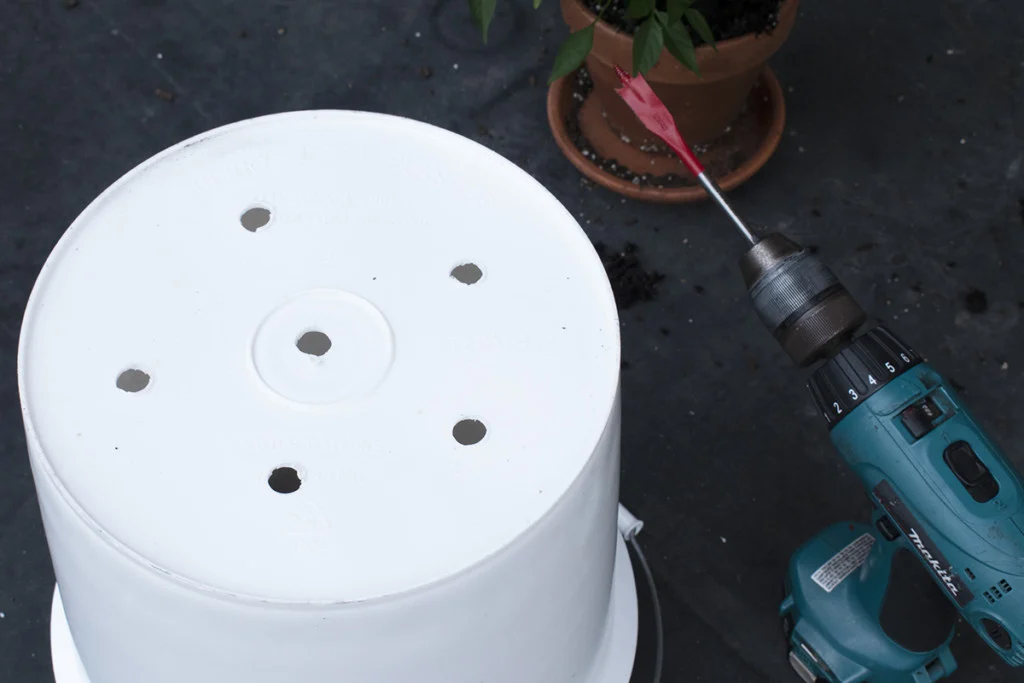
Again, yes, it is. Most plants need well-draining soil in order to prevent their roots from rotting.
If you end up purchasing a pot without a hole, be sure to safely drill one before planting.
Should I plant seeds or transplants in containers?
In short, both are good. It depends more on what vegetable you are attempting to grow.
Planting seeds directly in the soil is always better for crops such as lettuce, carrots, radish, spinach, etc.
Transplants are a faster way to see results in your container gardening. You can start them from seed yourself, or purchase them from farmers markets in season. This works well for tomatoes, peppers, eggplants, cabbage, broccoli and the like.
Is this the year you will try container gardening? Not only to save space, but to harvest with ease, in a smaller-scale that suits your modern gardening style?
Be sure to share your container gardening successes with all who appreciate your healthy food growing efforts!

Get the famous Rural Sprout newsletter delivered to your inbox.
Including Sunday ramblings from our editor, Tracey, as well as “What’s Up Wednesday” our roundup of what’s in season and new article updates and alerts.


